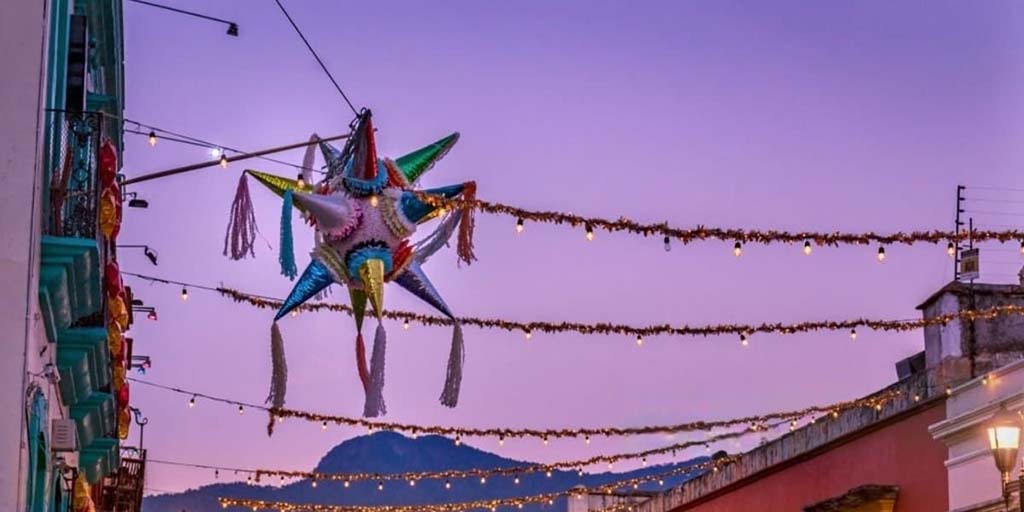
Cozumel Christmas Posadas Monica Sauza
Have you been to a traditional posada?
‘tis the season to be jolly!

by Monica Sauza
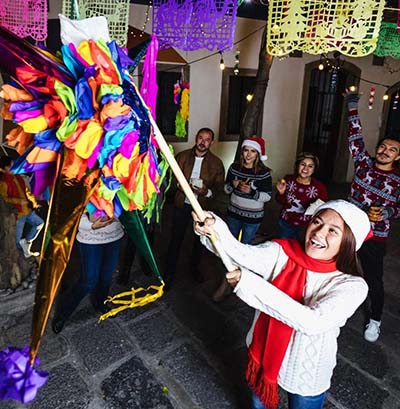
Around the world, wintertime brings about a variety of religious and cultural events, many of which are originally linked to ancient lore and rituals. Within the vastly rich Mexican history, the festivities known as posadas are an inherited result of the religious syncretism between Catholicism and pre-Hispanic beliefs and practices. And, well, in Mexico there’s always something to celebrate.
When the Spanish arrived at Tenochtitlan, they sought a way of teaching their religion to the people they had conquered. Thus, Catholic priests took advantage of the Panquetzaliztli festivities that celebrated the birth of Huitzilopochtli (“Left-handed Hummingbird” – god of war, solar invocation, and patron of the Mexica/Aztecs) on December 21st. The closeness of the dates of the European Christmas celebrating the birth of Jesus of Nazareth with the birth of Huitzilopochtli, facilitated the conversion of the indigenous peoples of Mexico to Christianity.
Only a few years after the Conquest, through public reenactments of the pilgrimage of Joseph and Mary to Bethlehem seeking shelter for the birth baby Jesus, the religious conversion was achieved. These representations gave origin to the posadas [The word posada in English means “shelter” or “inn”]
While the posadas have become a more popular excuse to party, this tradition which originally started in Mexico, has spread out to other countries in Central and South America. The posadas take place from December 16 to the 24th before the Christmas celebration and are also a result of the cultural fusion. From the Mexica/Aztecs’, come 14 days before Huitzilopochtli’s birth preparing temples and the slaves who would be sacrificed in his honor; and from the Spaniards, the 9 days symbolizing the journey made by Mary and Joseph to Bethlehem and Mary’s nine-month pregnancy.
The original posadas involved processions in church courtyards while singing litanies and carrying religious images. Nowadays these are largely celebrated at home with family and friends, reenacting the pilgrimage, and litanies are sung asking for shelter. Once the innkeepers open the door to the pilgrims, the big celebration starts.
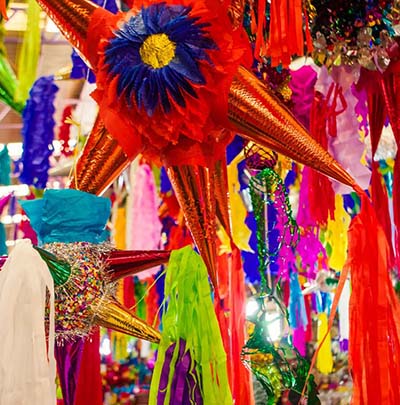
A must in a posada is the piñata. Even though the piñata originated in China, Spanish catechists used the piñata’s shapes to represent the seven sins by peaks or spikes which must be beaten down. Once the sins have been defeated, the reward is found inside the piñata in the form of candy, fruit, and toys.
Just as in many other Mexican festivities, something that must never be overlooked in a traditional posada is food. The diverse gastronomy is present in an assortment of snacks, delicious fritters, tamales, churros, puff pastries, enchiladas, different types of tacos, tostadas, atole, and a well-prepared fruit punch (ponche), another cross-cultural feature going back to India (“pac”), brought to Europe by British sailors and then by the Spaniards to Mexico in Colonial times. There are over 100 recipes for the punch; some are non-alcoholic, but its 5 basic ingredients are alcohol (usually rum), sugar (piloncillo/powdered brown sugar), water, lemon, and tea and must always be include fruits of the season.
So, get ready to enjoy and celebrate this old holiday tradition so deeply rooted in the Mexican culture.
¿Ha estado en una posada tradicional?
¡Es la época para estar alegres!
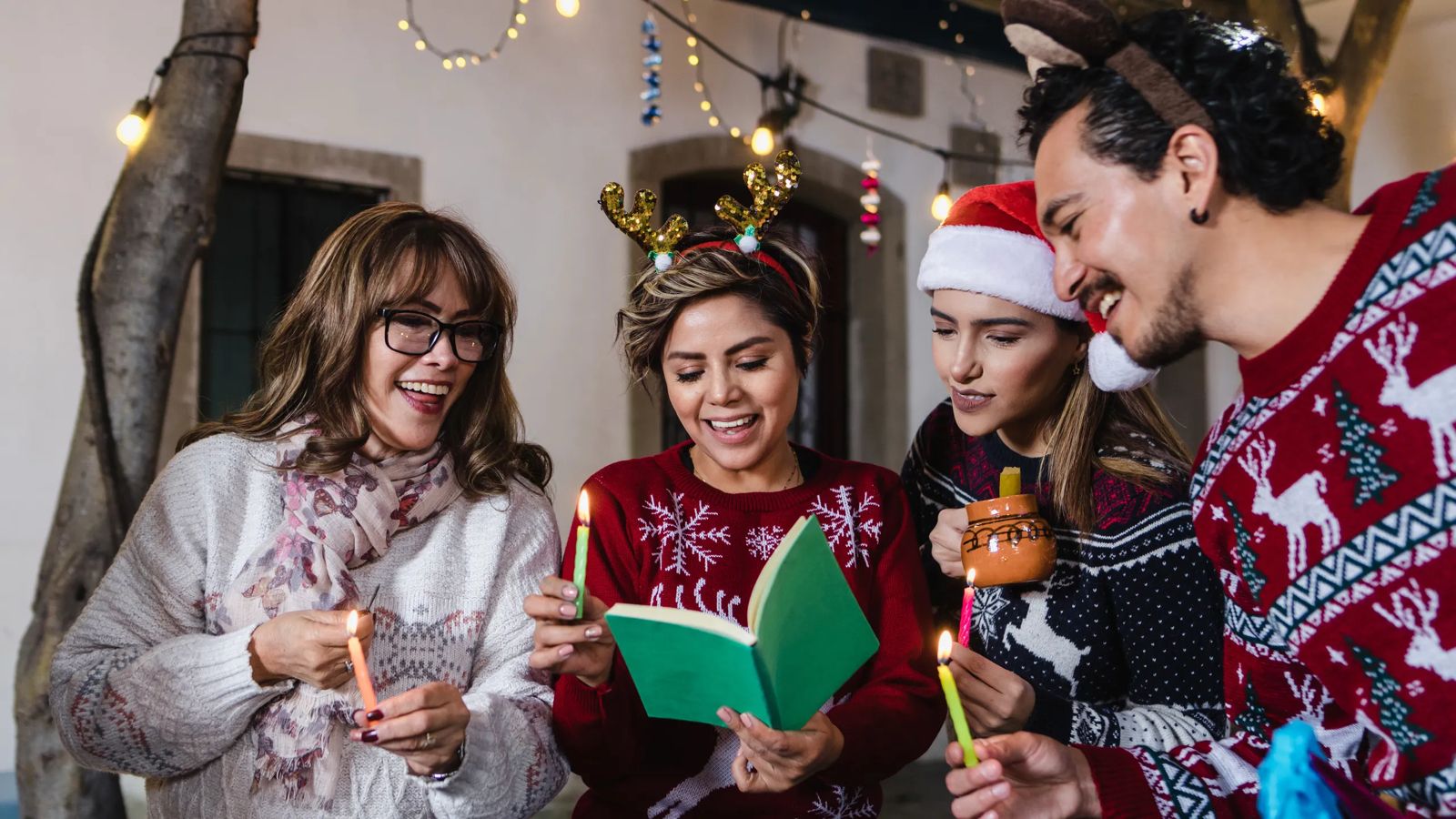
por Monica Sauza
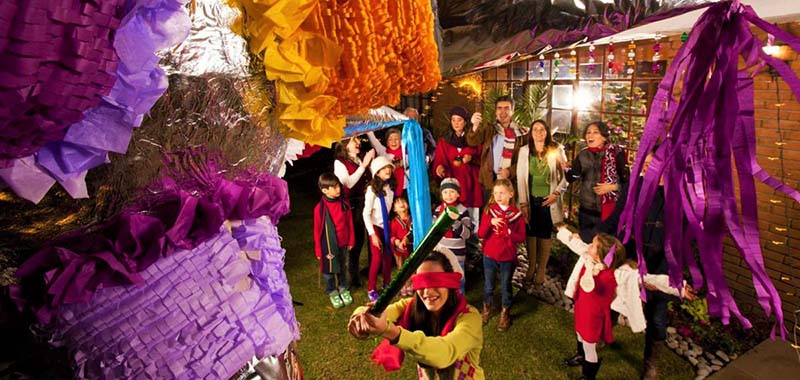
En todo el mundo, el invierno trae consigo una gran variedad de eventos religiosos y culturales, muchos tienen sus orígenes liados a antiguas tradiciones y rituales. Dentro de la riquísima historia mexicana, las fiestas conocidas como posadas son un resultado heredado del sincretismo religioso entre el catolicismo y las creencias y prácticas prehispánicas. Y, bueno, en México siempre hay algo que celebrar.
Cuando los españoles llegaron a Tenochtitlán, buscaron una forma para enseñar su religión al pueblo que habían conquistado. De esta manera, los sacerdotes católicos aprovecharon las fiestas del Panquetzaliztli el 21 de diciembre, a través de las cuales se celebraba el nacimiento de Huitzilopochtli (“Colibrí Zurdo”, dios de la guerra, de la invocación solar y patrono de los mexicas/aztecas). La cercanía de fechas de la Navidad europea que celebraba el nacimiento de Jesús de Nazaret y el nacimiento de Huitzilopochtli, facilitó la conversión al cristianismo de los pueblos indígenas de México.
Pocos años después de la Conquista, mediante representación públicas de la peregrinación de José y María hacia Belén en busca de un albergue para el nacimiento del niño Jesús, fue que se logró la conversión religiosa. Estas representaciones dieron origen a las posadas [la palabra también se refiere a alojamiento].
Si bien las posadas se han convertido en una excusa más popular para salir de fiesta, esta tradición que originalmente comenzó en México se ha extendido a otros países de Centroamérica y de Sudamérica. Las posadas tienen lugar del 16 al 24 de diciembre antes de la celebración de la Navidad, y son también el resultado de la fusión cultural. De los mexicas/aztecas, vienen 14 días previos al nacimiento de Huitzilopochtli preparando templos y a los esclavos que serían sacrificados en su honor; y de los españoles, vienen los 9 días que simbolizan el peregrinaje de María y José y los nueve meses de embarazo de María.
Las posadas originales consistían en procesiones por los patios de las iglesias
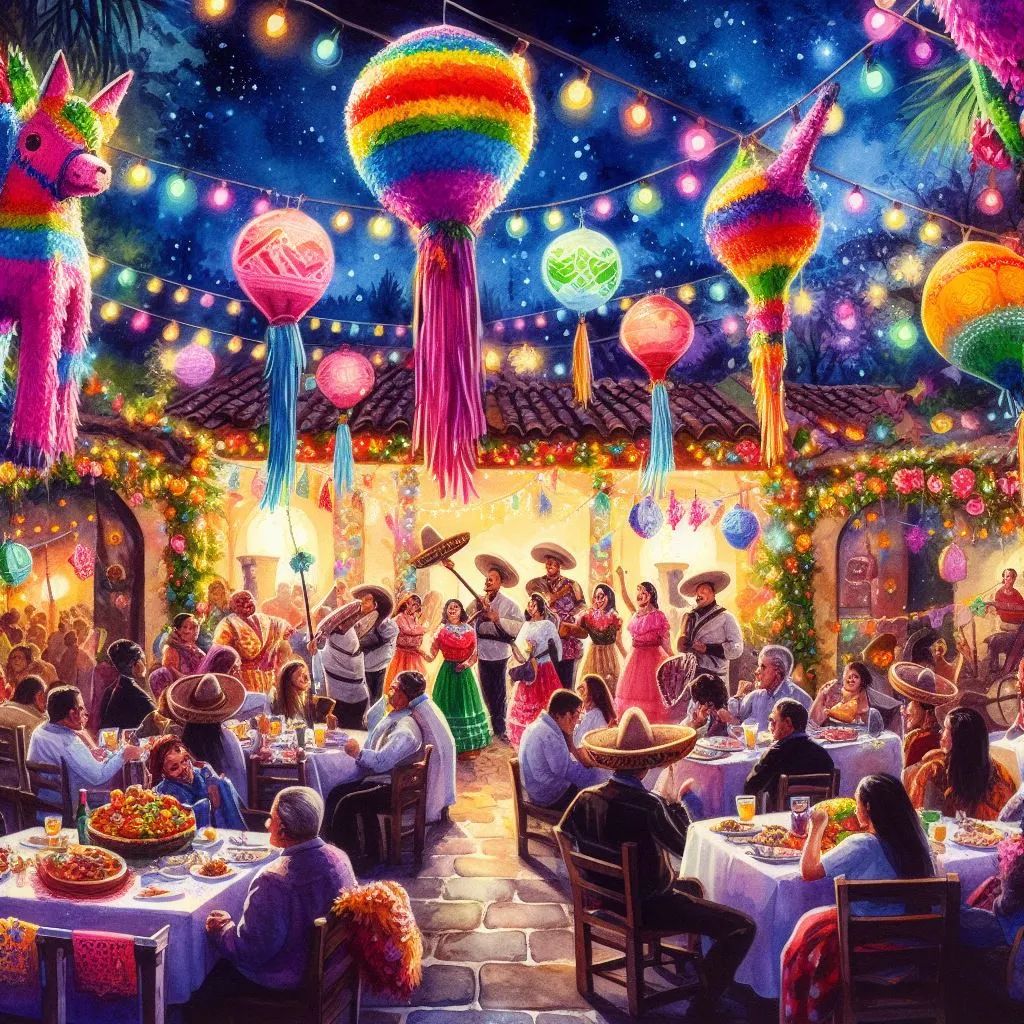
cantando letanías y portando imágenes religiosas. Hoy en día se celebran principalmente en casa, con la familia y amigos, escenificando la peregrinación, y se cantan letanías pidiendo posada. Una vez que los posaderos abren a puerta a los peregrinos comienza la fiesta.
La piñata no puede faltar en una posada. Aunque la piñata es originaria de China, los catequistas españoles utilizaron las formas de esta para representar los siete pecados mediante picos o puntas que deben ser apaleados. Una vez derrotados los pecados, la recompensa se encuentra dentro de la piñata en forma de dulces, frutas y juguetes.
Al igual que en muchas otras festividades mexicanas, la comida es algo que nunca debe pasarse por alto en una posada tradicional. La variada gastronomía está presente en el variadísimo surtido de antojitos, ricos buñuelos, tamales, churros, hojaldres, enchiladas, diferentes tipos de tacos, tostadas, atole, y un ponche de frutas bien preparado, otro característica intercultural que se remonta a la India (“pac”) traído a Europa por marineros británicos y luego por los españoles a México en la época colonial. Existen más de 100 recetas para el ponche; algunas son sin alcohol, pero sus 5 ingredientes básicos son alcohol (por lo general, ron), azúcar (piloncillo/azúcar morena en polvo), agua, limón, te, y siempre debe incluir frutas de la temporada.
Así que prepárese a disfrutar y celebrar esta antigua tradición navideña tan arraigada en la cultura mexicana.
Otra fugitiva de la Ciudad de México. Mónica ha hecho de Cozumel su hogar definitivo. Desde su llegada en 1981, trabajo en turismo en todos los lugares habituales: hoteles, buceo, aeropuerto, ferries, hasta que se abrió la oportunidad de desempeñarse en su campo. Desde finales de la década de los años 70 Mónica ha estado traduciendo e interpretando, dedicándose plenamente a ello a partir de 1998, y ha asistido a extranjeros y locales de la Isla a establecer su residencia y sus negocios. Es traductora con gran experiencia, ávida historiadora y una gran fuente de tradiciones y leyendas locales.
- Mexican History 3 Kings Day - January 8, 2025
- 2025 Mexican National Holidays - January 3, 2025
- Mayan Weather Predictions - January 2, 2025
Another escapee from Mexico City, Monica has made Cozumel her definite home. Since her arrival -in 981- she worked in tourism in all the usual venues: hotels, scuba diving, airport, ferries, until the opportunity to practice in her chosen field grew. Since the latter part of the 70s Monica has been translating and interpreting, fully devoting herself to it since 1998, and has assisted foreigners and Island residents establish residence and businesses- She is a Translator with extensive experience, an avid historian and a great source of local lore and legends. Otra fugitiva de la Ciudad de México. Mónica ha hecho de Cozumel su hogar definitivo. Desde su llegada en 1981, trabajo en turismo en todos los lugares habituales: hoteles, buceo, aeropuerto, ferries, hasta que se abrió la oportunidad de desempeñarse en su campo. Desde finales de la década de los años 70 Mónica ha estado traduciendo e interpretando, dedicándose plenamente a ello a partir de 1998, y ha asistido a extranjeros y locales de la Isla a establecer su residencia y sus negocios. Es traductora con gran experiencia, ávida historiadora y una gran fuente de tradiciones y leyendas locales.
Punta Celarain Cozumel History
Punta Celarain Cozumel History Punta Celarain and the Celarain Lighthouse Both Bear...
Significance May 1 May 5 Mexico
Significance May 1 May 5 Mexico The Significance of May 1 and...
Cozumel Museum
Cozumel Museum Cozumel’s “Museo de la Isla” Celebrates 38 Years Cozumel’s...
Feria Cedral Schedule
Feria Cedral Schedule La Feria de El Cedral & La Fiesta...


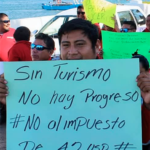








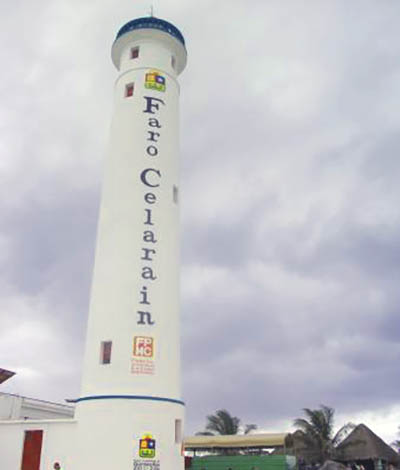
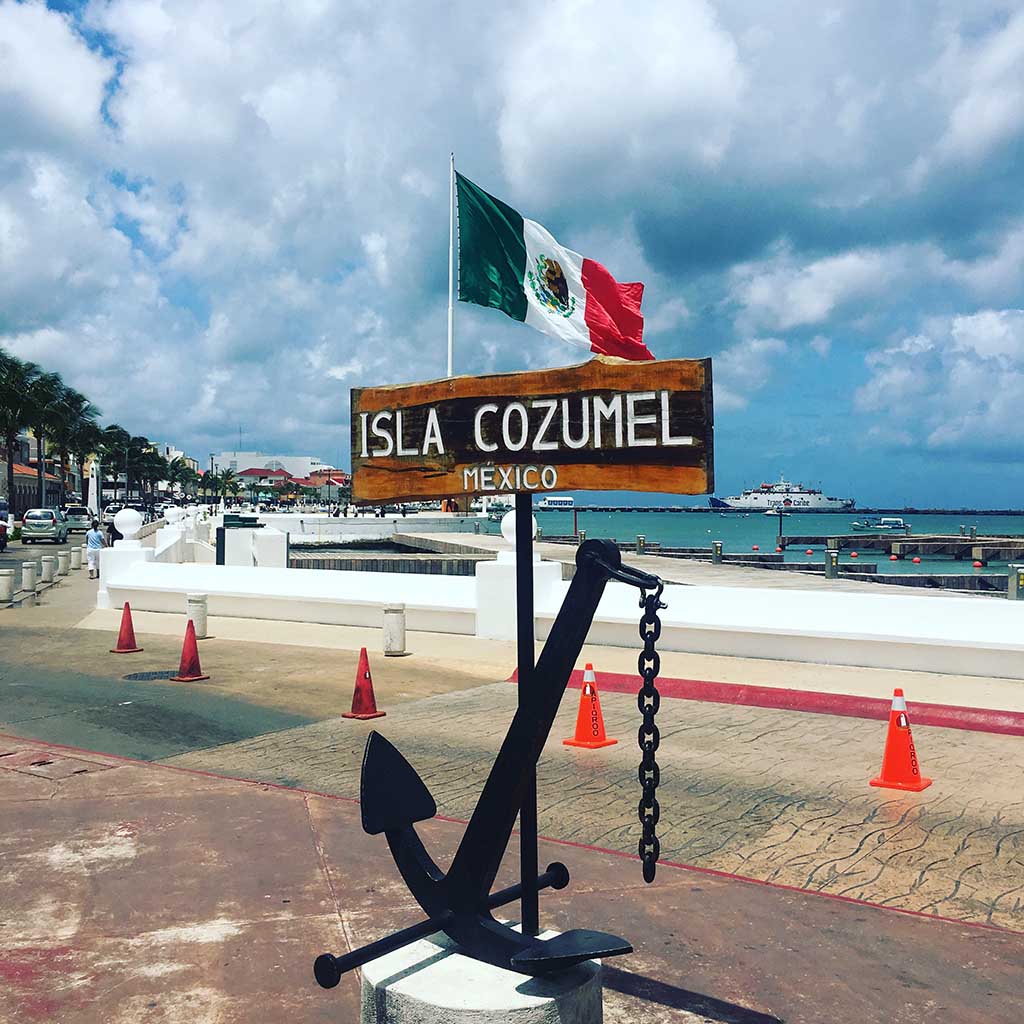
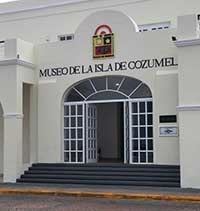
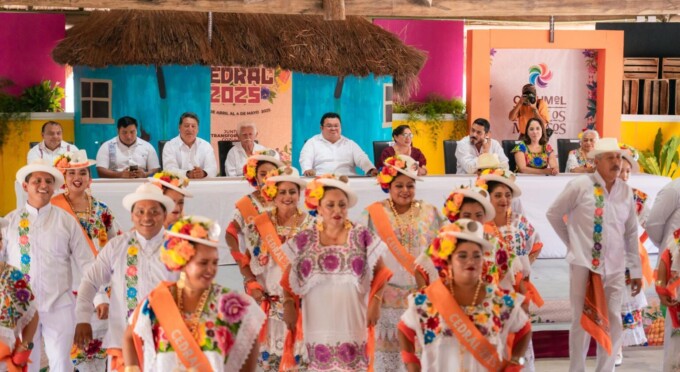



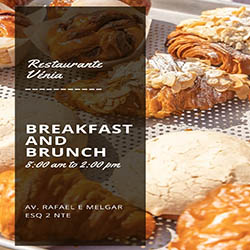

Leave a comment